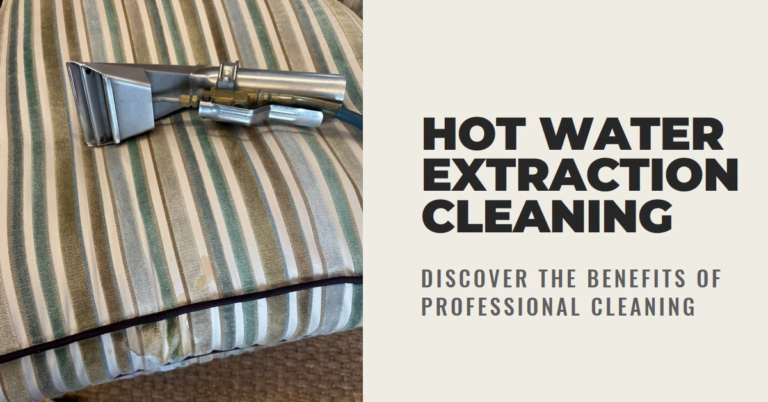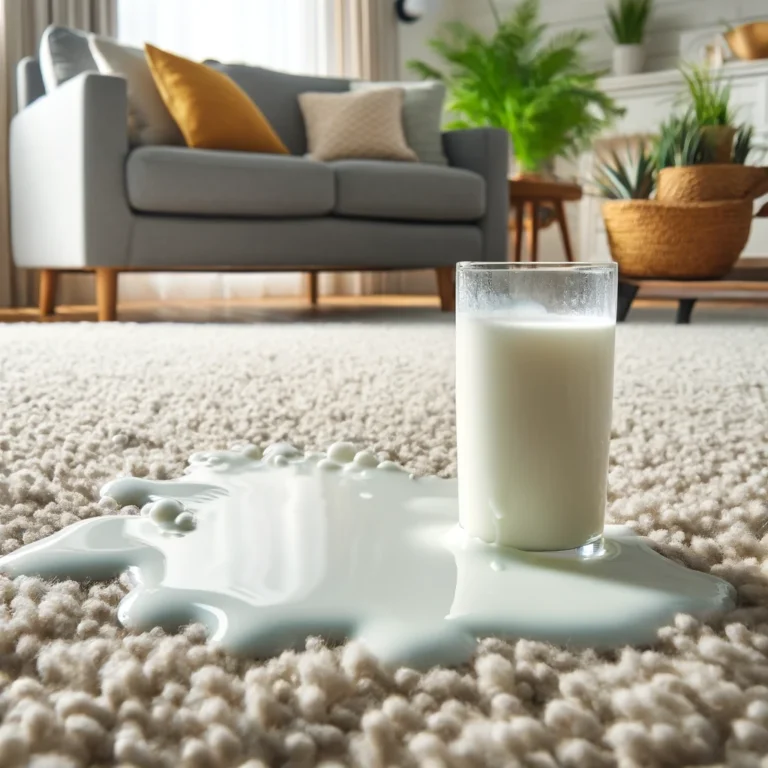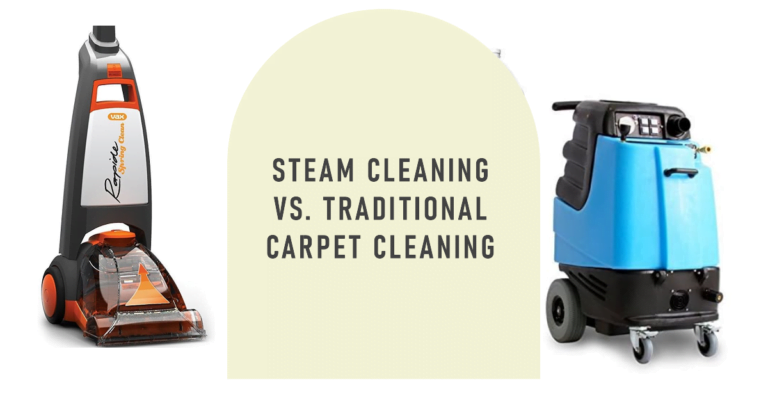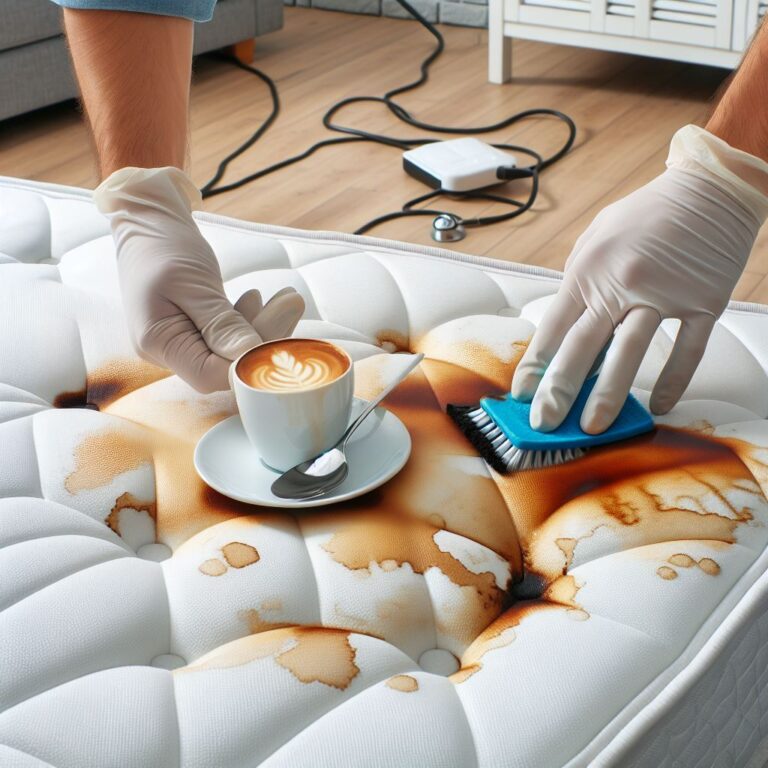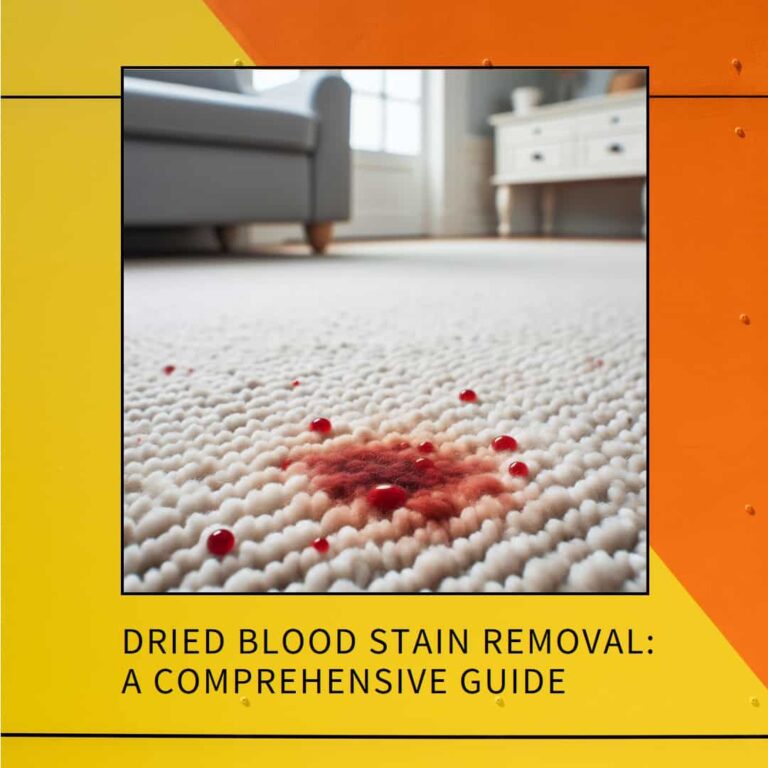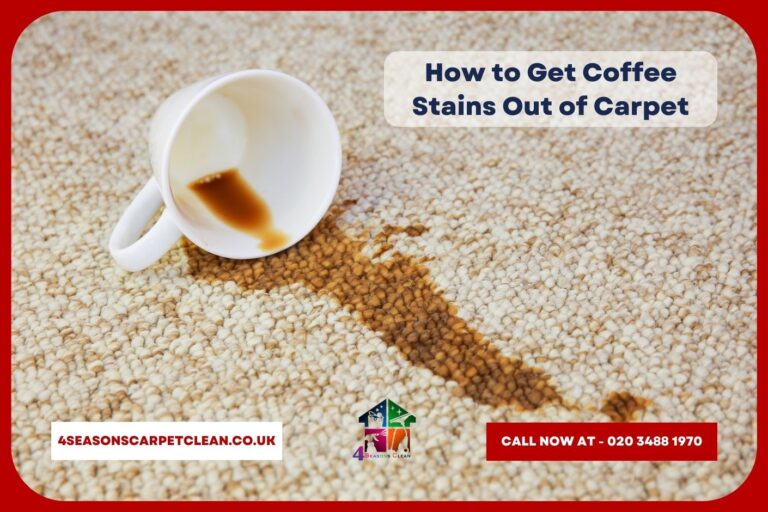The sight of a red wine spill can send shivers down any host’s spine. But fear not, for this guide will equip you with the knowledge and techniques to effectively remove red wine stains from various fabrics, restoring your garments to their former glory.
Learn how to tackle fresh and dried stains, explore DIY solutions, and uncover professional options – all with the assurance that you’ll emerge victorious from this battle against the dreaded red wine spill.
So, take a deep breath, banish the anxiety, and prepare to become a stain removal expert. With the knowledge and strategies, you’ll gain, you’ll never again fear the sight of a spilled red wine glass.
Understanding Red Wine Stains:
Red wine stains are caused by two chemicals: tannins and anthocyanins. Tannins are sticky and bind to proteins, while anthocyanins are the pigments that give red wine its color. Natural fibers, like cotton and wool, are more susceptible to staining than synthetic fibers because they have more proteins. Stains get worse the longer they sit, so it’s important to act quickly.
The Fabric Factor and Stain Removal
The type of fabric involved in a red wine spill significantly impacts the stain’s severity and the ease of its removal. Natural fibers, such as cotton and wool, are more susceptible to staining than synthetic fibers, such as polyester and nylon. This is because natural fibers have a higher protein content, providing more binding sites for tannins and anthocyanins.
The weave of the fabric also plays a role in stain resistance. Tightly woven fabrics, such as canvas and denim, offer more resistance to staining than loosely woven fabrics, such as silk and linen. This is because the tighter weave creates fewer gaps for the stain to penetrate.
Time and Temperature Influencing Stain Severity
Prompt action is paramount in red wine stain removal. The longer the stain sits, the more deeply the tannins and anthocyanins will embed themselves into the fabric fibers, making the stain more difficult to remove. This is because the tannins undergo oxidation over time, further strengthening their bond with the protein fibers.
Temperature also influences stain severity. Heat can accelerate the oxidation process, making the stain more stubborn. Therefore, it is generally advisable to avoid using hot water or placing stained garments in a dryer, as these actions can exacerbate the problem.
By understanding the chemistry behind red wine stains and the factors that influence their severity, we can make informed decisions about the most effective stain removal strategies.
We are highly suggested on Google My Business
115+ 5.0 ★★★★★ reviews
The Challenge of Dried Stains: A Test of Resolve
Dried red wine stains pose a more formidable challenge, as the tannins and anthocyanins have had ample time to embed themselves deeply within the fabric fibers. Removing these stubborn stains requires a more vigorous and persistent approach, utilizing techniques that can break down the tannin-protein bonds and dissolve the stain-causing compounds.
The Hydrogen Peroxide and Dishwashing Liquid Solution: A Powerful Duo
Hydrogen peroxide, a mild oxidizing agent, can effectively break down the tannin-protein bonds, releasing the stain from the fabric fibers. When combined with dishwashing liquid, which acts as a surfactant, the solution becomes even more potent in tackling stubborn stains.
To prepare the solution, mix two parts 3% hydrogen peroxide with one part dishwashing liquid. Apply the solution directly to the dried red wine stain, ensuring it is fully saturated. Allow the solution to sit for approximately 30 minutes, giving it time to work its magic.
After the allotted time, blot the area with a clean, absorbent cloth. If the stain persists, repeat the process. Once the stain has significantly faded or been removed, rinse the treated area thoroughly with cool water to remove any residual hydrogen peroxide or dishwashing liquid.
The White Wine or Vinegar Approach: A Counterintuitive Yet Effective Method
While it may seem counterintuitive, applying white wine or vinegar to a red wine stain can actually help neutralize the stain and make it easier to remove. This is because the acidity in white wine or vinegar can counteract the alkalinity of the tannins, weakening their bond with the protein fibers.
To utilize this method, soak a clean, absorbent cloth in white wine or vinegar. Apply the soaked cloth to the dried red wine stain, ensuring it is fully saturated. Allow the cloth to sit on the stain for approximately 15 minutes.
After the allotted time, remove the cloth and rinse the treated area thoroughly with cool water to remove any residual white wine or vinegar. Repeat the process if the stain persists.
By employing these effective strategies, even stubborn dried red wine stains can be conquered, restoring your garments to their former glory. Remember, patience and persistence are key in tackling these challenging stains.
Harnessing the Power of Household Ingredients: DIY to the Rescue
In addition to the targeted stain removal techniques discussed in the previous sections, a variety of readily available household ingredients can be employed to combat red wine spills. These DIY methods offer a convenient and cost-effective approach to stain removal, empowering you to tackle spills promptly and effectively.
Salt: A Simple Yet Effective Absorber
Salt, a staple in every kitchen, can serve as a surprisingly effective absorber of red wine spills. The coarse grains of salt act as microscopic sponges, drawing out the spilled wine from the fabric fibers. This technique is particularly useful for fresh spills, as it helps prevent the stain from setting in.
To utilize salt as a stain remover, generously sprinkle salt over the spilled red wine. Allow the salt to sit for approximately 15 minutes, giving it ample time to absorb the wine. After the allotted time, gently brush or vacuum away the salt. If the stain persists, repeat the process.
Baking Soda: A Multifaceted Stain Remover
Baking soda, another common household ingredient, possesses multiple stain removal properties. Its alkaline nature helps neutralize the acidity of red wine, while its absorbent properties aid in drawing out the spilled wine from the fabric. Additionally, baking soda’s mild abrasiveness can help loosen the stain-causing compounds from the fabric fibers.
To employ baking soda as a stain remover, create a paste by mixing baking soda with a small amount of water. Apply the paste directly to the red wine stain, ensuring it is fully saturated. Allow the paste to sit for approximately 30 minutes. After the allotted time, gently brush away the dried paste. Rinse the treated area thoroughly with cool water to remove any residual baking soda.
Dishwashing Liquid: A Versatile Stain Fighter
Dishwashing liquid, a staple in every kitchen sink, can be surprisingly effective in tackling red wine stains. Its surfactant properties help break down the tannin-protein bonds that hold the stain-causing compounds in place, making them easier to remove. Additionally, dishwashing liquid’s mild cleansing action can help lift the stain from the fabric fibers.
To utilize dishwashing liquid as a stain remover, mix a small amount of dishwashing liquid with water to create a soapy solution. Apply the solution directly to the red wine stain, ensuring it is fully saturated. Allow the solution to sit for approximately 15 minutes. After the allotted time, blot the area with a clean, absorbent cloth. Rinse the treated area thoroughly with cool water to remove any residual dishwashing liquid.
Milk: A Surprising Stain Absorber
Milk, a common household beverage, can be an unexpected ally in the fight against red wine stains. The casein protein found in milk has a natural affinity for tannins, helping to bind and absorb the stain-causing compounds. This technique is particularly useful for delicate fabrics, as milk is less harsh than other stain removal methods.
To utilize milk as a stain remover, soak a clean, absorbent cloth in cold milk. Apply the soaked cloth to the red wine stain, ensuring it is fully saturated. Allow the cloth to sit on the stain for approximately 15 minutes. After the allotted time, rinse the treated area thoroughly with cool water to remove any residual milk.
Remember to Pretest and Approach with Caution
Before applying any DIY stain removal solution to a visible area of the fabric, pretest it on an inconspicuous area to ensure it does not cause any damage. Always exercise caution when using DIY methods, as some ingredients may have adverse effects on certain fabrics. If unsure about the suitability of a particular method, consult a professional stain removal service.
Seeking Professional Assistance: When DIY Methods Fall Short
While DIY stain removal methods can be effective in tackling many red wine spills, there are instances when professional intervention is necessary. For particularly stubborn stains, delicate fabrics, or extensive spills, seeking the expertise of professional stain removal services is the most prudent course of action.
Expertise and Specialized Techniques
Professional stain removal specialists possess extensive knowledge of various fabrics, stain-causing agents, and effective removal techniques. They are equipped with specialized tools and equipment, such as high-powered vacuums and specialized cleaning solutions, that are not readily available to the average household.
Thorough Stain Removal and Fabric Preservation
Professional stain removal services employ a methodical approach to stain removal, carefully assessing the fabric type, stain severity, and potential risks. They utilize specialized techniques that target the stain-causing compounds without damaging the delicate fibers of the fabric. This ensures that the stain is effectively removed while preserving the integrity and appearance of the garment.
Peace of Mind and Guaranteed Results
Engaging professional stain removal services provides peace of mind, as you can entrust the restoration of your cherished garments to experienced and skilled individuals. Many professional services offer warranties or guarantees on their work, ensuring that you are satisfied with the outcome.
When to Consider Professional Stain Removal
- For stubborn, dried red wine stains that have resisted DIY methods.
- For delicate fabrics, such as silk, wool, or vintage garments
- For extensive spills that involve multiple garments or upholstery
- When you lack the time or expertise to handle the stain removal process yourself
Professional stain removal services offer a valuable solution for tackling challenging red wine stains, restoring your garments to their former glory while providing peace of mind and guaranteed results.
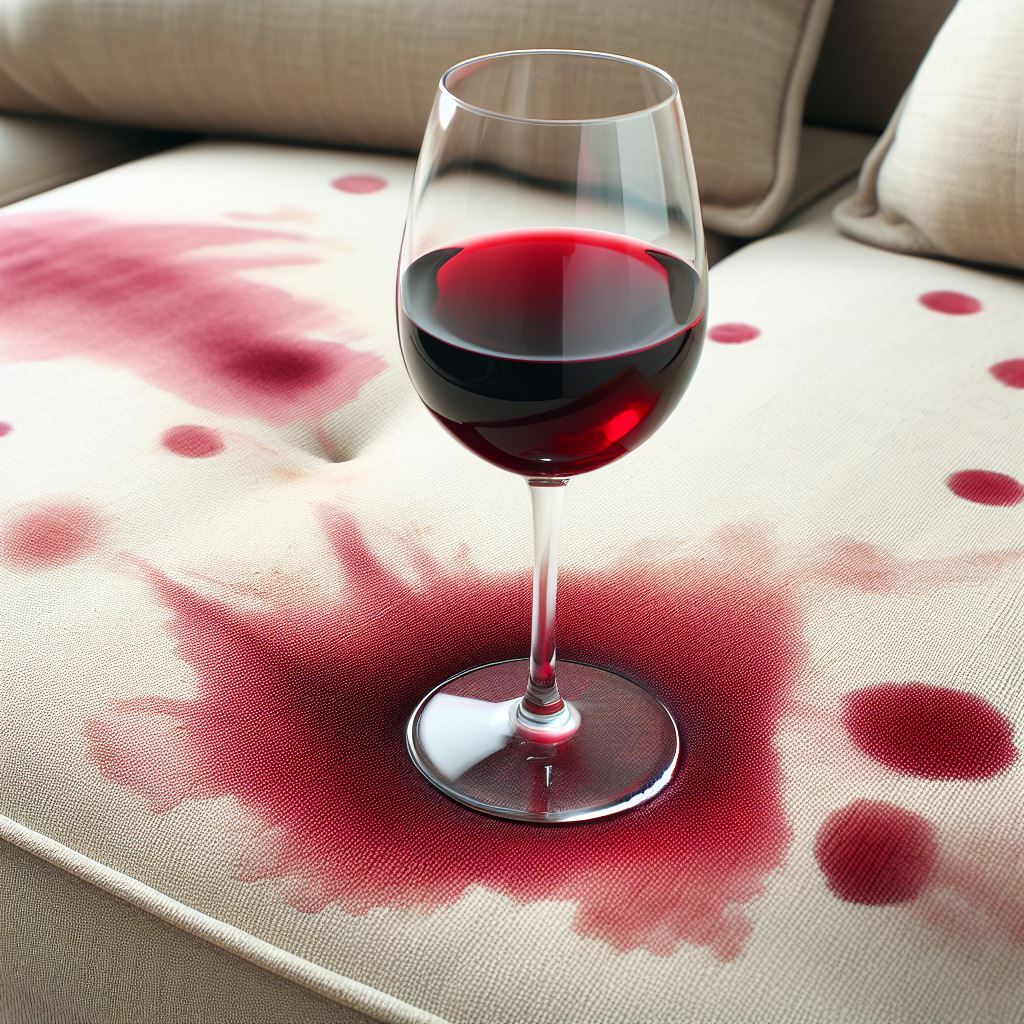
Minimizing the Risk of Red Wine Spills
While prompt action after a red wine spill is crucial, prevention is always the best strategy. By adopting a proactive approach, you can significantly reduce the risk of spills and protect your garments from the dreaded red wine stain.
Mindful Drinking Habits and Spill Avoidance Techniques
Mindful drinking habits can go a long way in preventing spills. Avoid overloading wine glasses, and use a wide rimmed glass to minimize the chance of sloshing. Utilize coasters religiously, and place glasses on stable surfaces away from the edge of a table or counter.
Employing Stain-Resistant Fabrics and Protective Measures
opt for stain-resistant fabrics whenever possible, as these fabrics are designed to repel liquids and resist staining. Consider applying fabric protectors, which create a barrier against spills and make stains easier to remove.
Investing in Spill-Proof Tablecloths and Napkins
Spill-proof tablecloths and napkins act as a first line of defense against spills, preventing the wine from reaching your garments. Choose absorbent, easy-to-clean materials, and replace them promptly after spills.
Educating Guests and Promoting Spill Awareness
Educate guests about the potential for spills and encourage them to exercise caution when handling wine glasses. Promote spill awareness by placing absorbent mats or coasters in designated drinking areas.
By incorporating these preventive measures into your everyday lifestyle, you can significantly reduce the risk of red wine spills, protecting your garments and maintaining a stress-free wine-drinking experience.
Navigating the World of Red Wine Stain Removal
Red wine spills, with their potential to leave unsightly stains on cherished garments, can cause a surge of anxiety and uncertainty. To address common concerns and provide clarity, here’s a compilation of frequently asked questions (FAQs) related to red wine stain removal.
Frequently Asked Questions (FAQs) About Addressing Common Red Wine Stain Concerns
Remember, patience and persistence are key when tackling red wine stains. By understanding the chemistry of the stain, employing effective stain removal techniques, and seeking professional assistance when needed, you can restore your garments to their former glory.
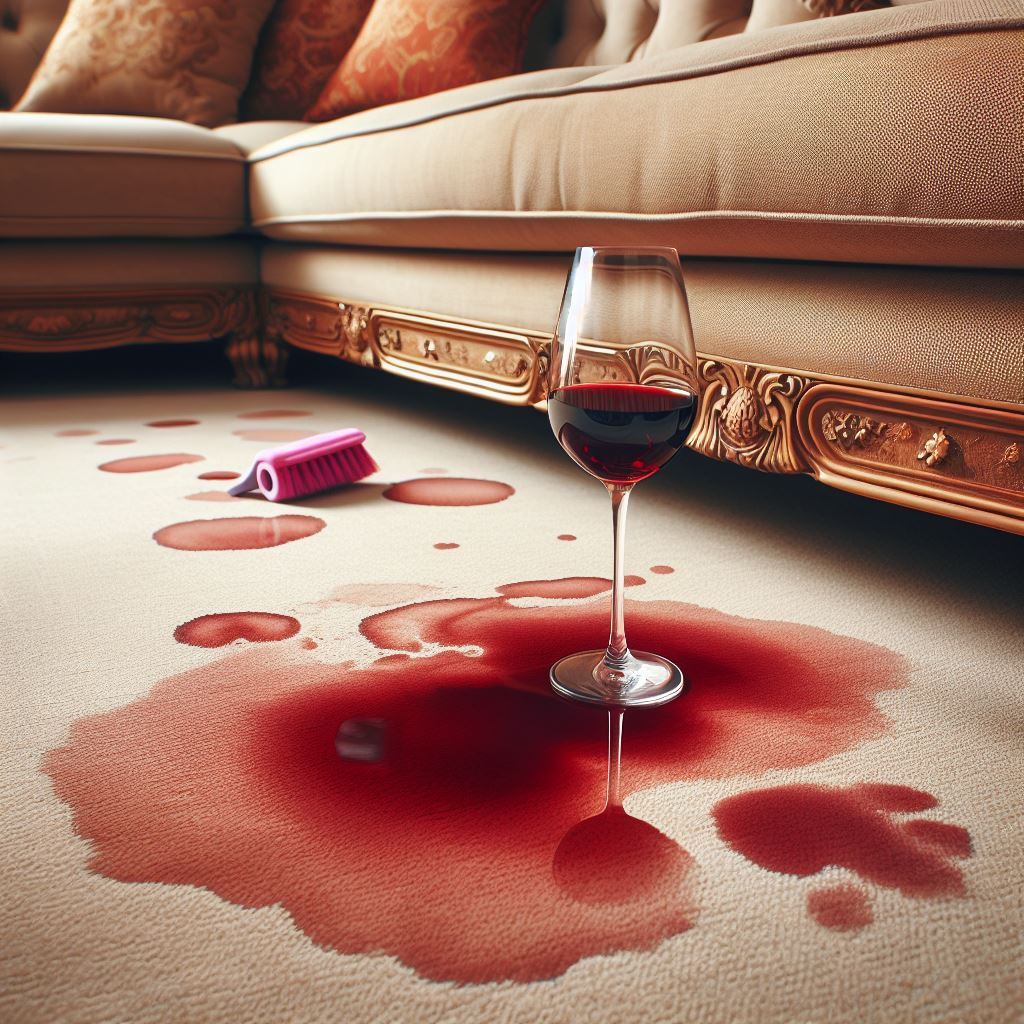
Conclusion
As you navigate the often-daunting world of red wine stain removal, this comprehensive guide has equipped you with the knowledge and strategies to confidently tackle these pesky spills and restore your garments to their pristine state. Remember, prompt action is paramount, for the sooner you address the spill, the greater the chances of successful stain removal.
For fresh spills, blotting, absorbing, and utilizing club soda or salt can be highly effective in lifting the stain-causing compounds from the fabric fibers. For stubborn stains that have had time to embed themselves deeply, hydrogen peroxide and dishwashing liquid, or white wine or vinegar, can break down the tannin-protein bonds that hold the stain in place, effectively lifting the stain.
If you encounter particularly challenging stains, delicate fabrics, or extensive spills, don’t hesitate to seek professional stain removal services. Their expertise and specialized techniques can restore your garments without damaging the fabric, ensuring that your cherished pieces remain in impeccable condition.
As you embark on your stain removal journey, remember that prevention is always the best strategy. Mindful drinking habits, spill avoidance techniques, and stain-resistant fabrics can significantly reduce the risk of spills, allowing you to relax and savor the finer things in life without worrying about the potential consequences of misplaced glass.
Embrace the art of red wine stain removal, and never let a spilled glass cast a shadow over your sartorial elegance. With knowledge, patience, and a proactive approach, you can conquer even the most stubborn red wine stains, preserving the beauty of your garments and ensuring a stress-free wine-drinking experience. So, raise your glass to newfound knowledge, empowered to tackle any red wine spill that may come your way.

